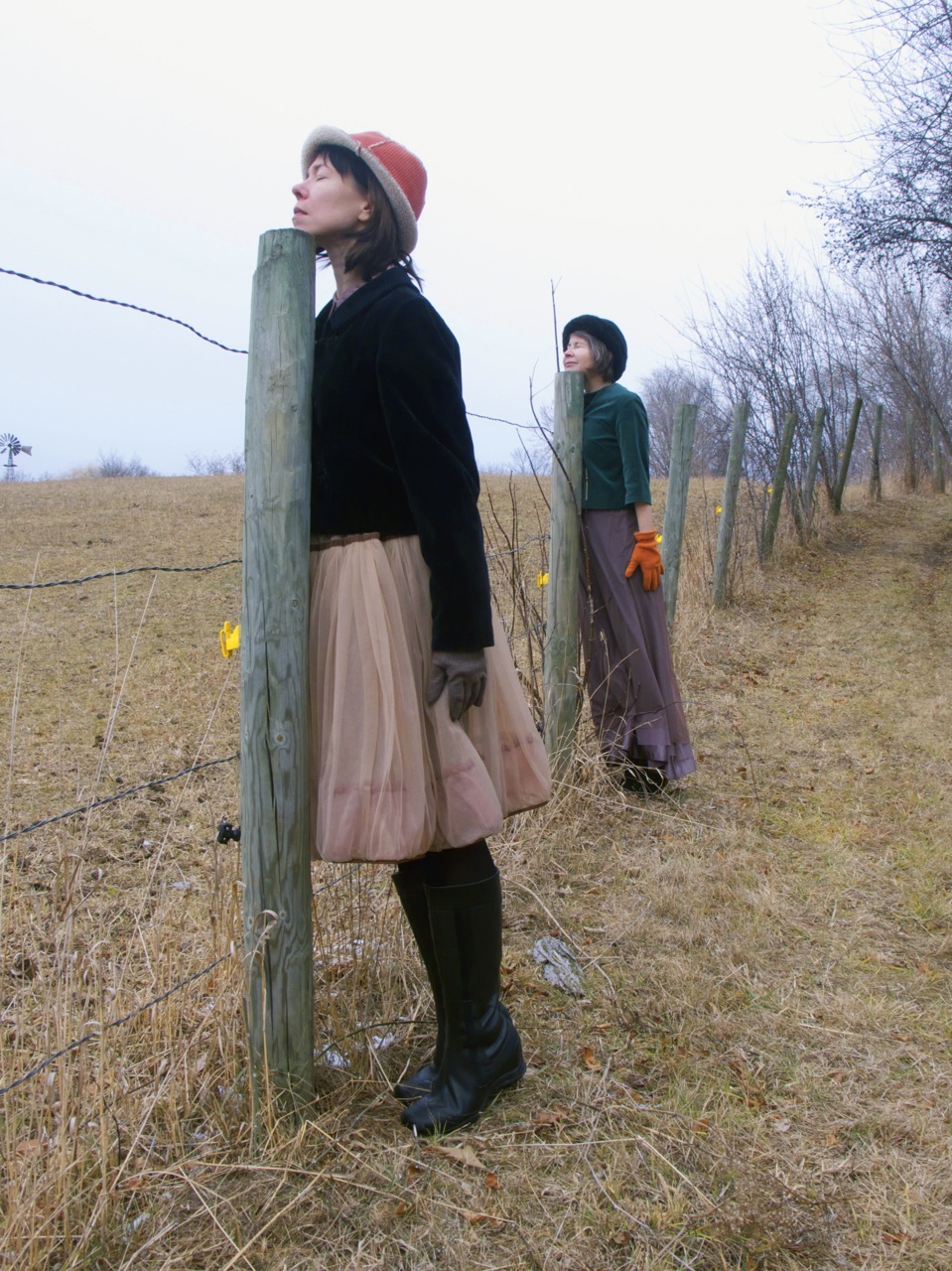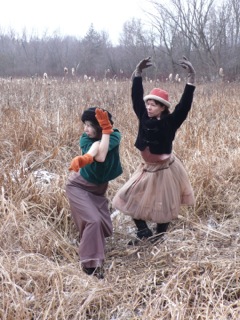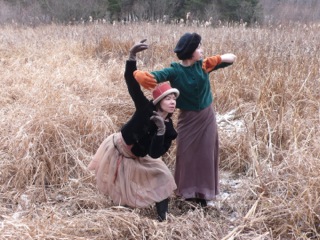Dancing It True
Lightsey Darst reviews a recent performance of new dance works by Penny Freeh and Paula Mann with Steve Paul and Time Track Productions, "Far Afield," on stage at the Red Eye Theater last weekend.



WHERE TO BEGIN? With a body in space. The body breathes; it’s flexible, beautiful. But it has a thorn or splinter, an abscess or excess, that makes it rise and writhe in light. What should be in the air and buoyant clings to the ground, secret; what should be vertical goes horizontal, in question not statement. He strains a hand as if it could be a mouth but then smiles at you, a little lazily, dangerously. His timing is a hair beyond syncopation, jerky, jokey, drunk. One foot flexes and the other points; he lopes upstage, springs, lounges. What’s in him burns strange: he could do anything next. Next, you hear the tap tap tap of Morse code. S.O.S.? Mayday? He opens his mouth wide — not at you.
These images come from Penelope Freeh‘s solo for Nic Lincoln, “Paper Nautilus,” the most successful of the three pieces presented by Freeh and Paula Mann in their shared evening, Far Afield. What makes “Paper Nautilus” catch is the sense that there is one wound or wild streak that underlies it; it’s true. What exactly the truth is isn’t the point. The obvious subtext — Lincoln wears a sailor suit and dances to Astaire-esque jazz, his gestures longing — doesn’t exhaust the piece any more than hearing someone’s story exhausts the interest of watching them.
Freeh’s other piece, “Antique Beach,” comes as a tumble of vignettes in tear-stained shades — thistle, tumbleweed, dried violet. Three pioneers tremble at some frontier; one trembles most. She’s a visionary, lifted (in the piece’s most affecting sequence) as if she were a blind woman, unable to see her own exaltation. Merciless with each other, their partnering arms cutting like scissor blades, the other two are gentle with her. Freeh has the choreographic craft to carry her composition through, but I didn’t feel the same pulse I did in “Paper Nautilus”. “Antique Beach” reads to me like a rehash of some older yet unresolved themes of hers (the wounded one), or as if Freeh’s been reading family history recently and hasn’t gotten in deep enough yet. The movement’s where the lack shows. The visionary, Stephanie Fellner, has some complex steps, but all her moves stay in the same plane of strain. The other two, Amy Behm-Thompson and Stephen Schroeder, are both lovely and subtle dancers, but Freeh doesn’t find enough for them to do, and they fall back on the modern dancer’s stock moral purity. The tics that disrupt their moves don’t drive deep enough to feel organic; balancing between steps, they look like wind-up saints, revelation-engines.
______________________________________________________
He strains a hand as if it could be a mouth but then smiles at you, a little lazily, dangerously. His timing is a hair beyond syncopation, jerky, jokey, drunk. One foot flexes and the other points; he lopes upstage, springs, lounges. What’s in him burns strange: he could do anything next.
______________________________________________________
And that makes me wonder whether it’s the match between Freeh and Lincoln that makes “Paper Nautilus” so good. I don’t know what I think of Lincoln’s dancing in James Sewell Ballet; a friend once complained that he’s always pushing his personality, and yes, I can see that. Or, rather I could see that a few years ago. Lately, he doesn’t look so determined; I’m seeing more of his sense of humor, more ambiguity. More to the point, last summer I saw Lincoln in Judith Howard’s marvelous solo for him, “Dressage,” and there, as here, he released and let the real shade into what might be, like playing a flashlight over a dream landscape. Could Lincoln be building an evening of solos? I would go see that.
Another solo I would see is Paula Mann’s “O The Humanity”. It’s not a solo now, but a very busy duet with a noisy collage score and an ensemble of highly reflective young women, moving screens for Steve Paul’s video collage, new order caryatids. It’s clever and allusive, and the central couple goes crazy in the comfort of what I take to be their suburban avant-bourgeois media cave, like everyone you know. . . Or, wait a minute: who are these people? They told us our devices would make us mad, but it hasn’t happened to anyone I know: everyone I know is going crazy the good old-fashioned way — work, love, grief… But even if I don’t buy the plot, I still believe the crazy because Mann dances it. Mann can be a slow burn; it takes a while to notice how wickedly fast she is. But with her eyes made up like she’s been crying all week, and the mania flaming out from her bones, she’s a bonfire now. The question is: what moves her?
______________________________________________________
Noted performance details:
Far Afield, a new dance performance by Penelope Freeh and Paula Mann with Steve Paul and Time Track Productions, was on stage at the Red Eye Theater January 26 -28.
______________________________________________________
About the author: Originally from Tallahassee, Lightsey Darst is a poet, dance writer, and adjunct instructor at various Twin Cities colleges. Her manuscript Find the Girl was recently published by Coffee House; she has also been awarded a 2007 NEA Fellowship.